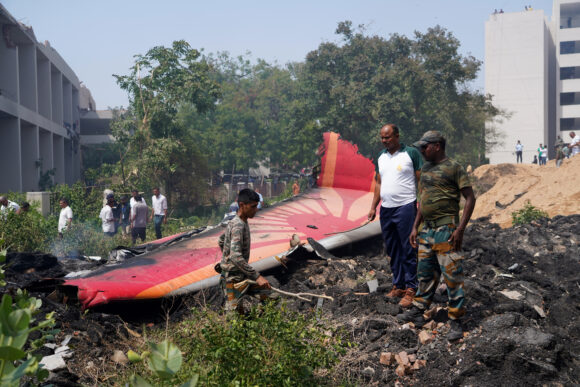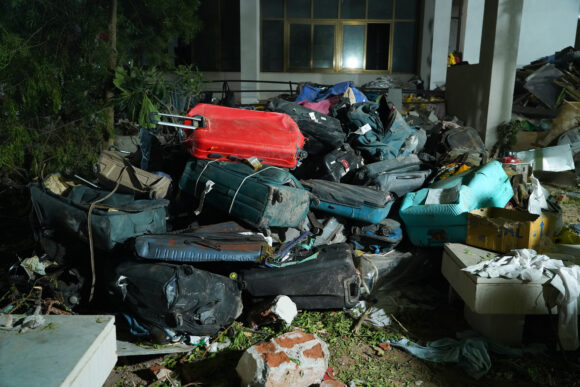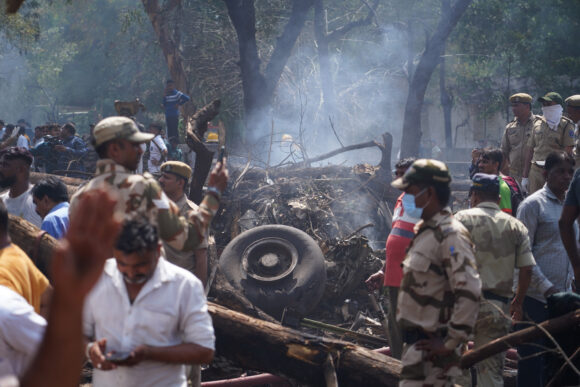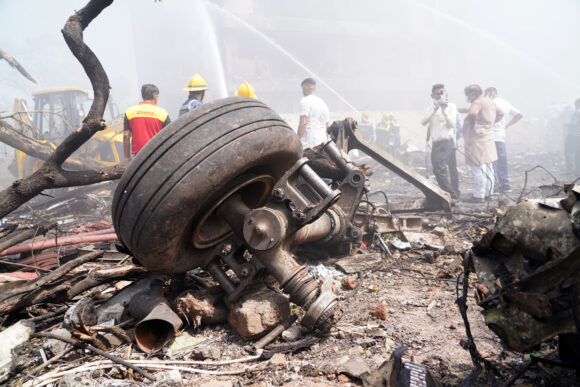As Air India Flight AI171 descended toward its doom on Thursday, Ramesh Vishwaskumar sat in the first row of economy class — headed for one of the most harrowing and luckiest moments of his life.
After the Boeing Co. 787 Dreamliner slammed into a densely populated district of the western Indian city of Ahmedabad, Vishwaskumar managed to get out of the plane. He was injured, but alive. All the 241 others on board had perished.
“I couldn’t believe what I was watching or how I made it out alive,” Vishwaskumar said in an interview with local media outlet NDTV. “When I opened my eyes, I realized I was alive. I removed my seatbelt and got off.”
Read more: Search for Answers Begins in Air India Crash That Killed 241
Vishwaskumar said that soon after take off, it felt like the aircraft was “stuck for five to 10 seconds” and green and white lights started flashing. “It seemed like it was pushing harder to take off,” he said. The green and white lights were likely emanating from the exit sign hanging off the cabin ceiling of the plane.
“On the side I was on, that part of the plane didn’t crash into the hostel, it landed on the ground floor. When the door on my side broke, I saw an opportunity to escape, so I got out. My left hand got burned when the fire started, but I was able to make it out.”

A video that has since gone viral on social media shows a slightly bloodied Vishwaskumar, a UK citizen aged 40 from the city of Leicester, walking near the crash site, surrounded by an incredulous crowd.
It’s a tale of survival that stands out in an aircraft accident that ranks as the worst disaster in civil aviation in more than a decade. The cause of the crash, which killed scores more on the ground as the fully fueled aircraft tore into buildings and exploded into flames, remains unknown. Doctors said Vishwaskumar’s injuries weren’t life threatening, according to a Hindustan Times report.

Vishwaskumar’s survival defies what has otherwise been a devastating episode that extends a string of deadly aviation crashes in recent months. Other accidents have included the mid-air collision between a military helicopter and a civil aircraft above Washington DC in January, which left no survivors. Only two people escaped the impact of a Boeing 737 with a runway barrier in December in South Korea.
Vishwaskumar, as he recovers and is interviewed further, may also be able to offer valuable clues as to what caused the accident. Salvage crews are still sifting through the wreckage to find possible survivors among people on the ground, alongside technical data like the voice and data recorders that are crucial to piece together the final moments of the doomed flight.

The lucky passenger was seated in row 11 at the left window seat, the first row in economy class that’s positioned right behind an emergency exit. An Air India 787 Dreamliner typically seats 256 passengers in a two-class configuration, with 18 seats in business and 238 seats in economy.
That proximity to an exit may well have contributed to saving his life.
“There was some space where I landed,” Vishwaskumar said. “And I managed to walk away from the wreckage.”
Top photograph: Aircraft landing gear at the crash site of Air India Ltd. flight AI171 in Ahmedabad, Gujarat, India, on Thursday, June 12, 2025. Photo credit: Siddharaj Solanki/Bloomberg
Was this article valuable?
Here are more articles you may enjoy.



 Foundation Firmed: AM Best Switches View of US Homeowners Insurers to Stable
Foundation Firmed: AM Best Switches View of US Homeowners Insurers to Stable  Death of Teenager on Carnival Cruise Ship Ruled a Homicide
Death of Teenager on Carnival Cruise Ship Ruled a Homicide  In Alabama, Shot Employee Gets No Workers’ Comp and No Employer’s Liability
In Alabama, Shot Employee Gets No Workers’ Comp and No Employer’s Liability  Why Reciprocal Insurance Exchanges Are Back in Fashion
Why Reciprocal Insurance Exchanges Are Back in Fashion 

